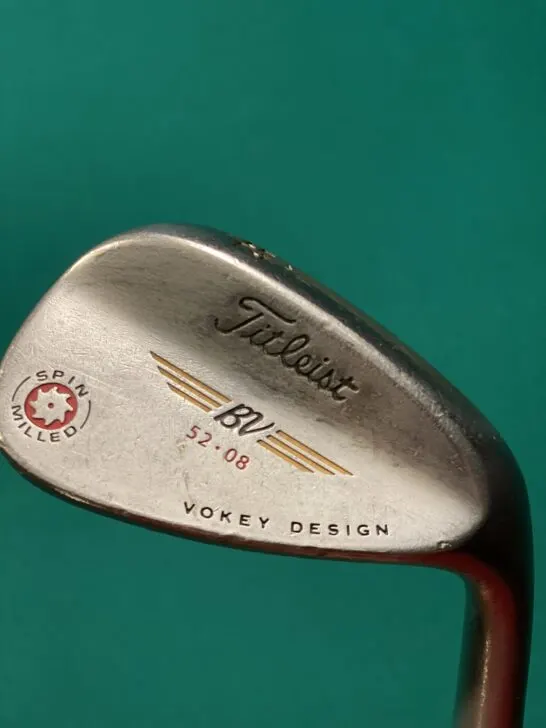Gap (approach) wedges typically have a loft of 48-52 degrees.
Most manufacturers carry three loft options for gap wedges: a 48 degree wedge, a 50 degree wedge, and a 52 degree wedge.
That said, wedges can easily be bent a degree stronger or weaker, depending on what you need.
What Is An AW or Approach Wedge Golf Club?
An AW, or approach wedge, is the same as a gap wedge.
They are different terms for the same club.
Some manufacturers use the term approach wedge and some use the term gap wedge.
It’s called an approach wedge because it is generally meant to be used on approach shots to the green.
Gap Wedge Distance
The average gap wedge distance is anywhere from 80-120 yards.
The most important factor in a gap wedge is how it fills in the “gap” between your pitching wedge and your sand wedge.
If your PW carries 125 yards and your SW carries 90 yards, you need a gap wedge that carries about 110.
Or, if your PW is 46 degrees and your SW in 56 degrees, you need a gap wedge that is 50-52 degrees.
What Bounce Should I Get?

Most manufacturers carry 48–52° wedges in 8-12 degrees of bounce.
Most amateurs would do well with a mid bounce gap wedge, meaning 6-10 degrees of bounce.
The amount of bounce in an approach wedge is less important than it is in a sand wedge or a lob wedge.
What Is A Gap Wedge Used For?
A gap wedge allows you to hit more full shots.
As with any club, full shots are much easier to hit consistently than ¾ shots or max shots.
The idea behind a gap wedge is that it allows you to hit a full shot instead of having to hit an easy PW or absolutely crush a SW.
A gap wedge is purely for filling that gap between your PW and your SW.
Although it is used primarily for full shots, it can also be used for pitching and chipping.
Related: Discover the Magic of the Bump and Run: Improve Your Short Game Today

